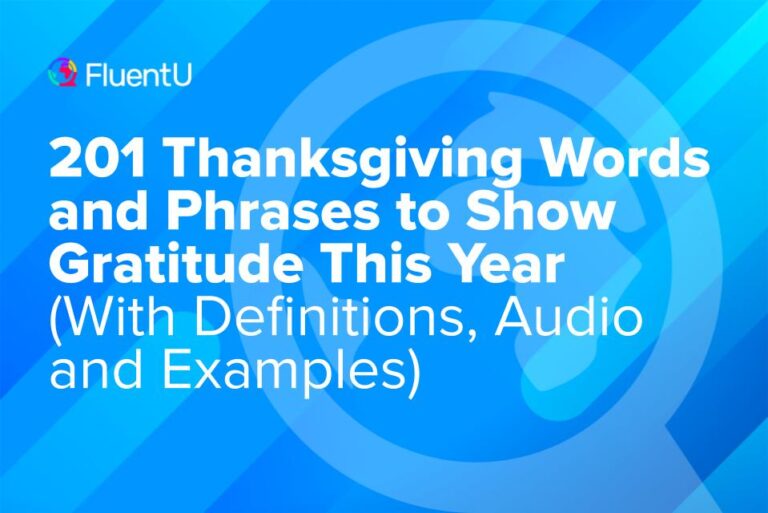
FluentU Language Learning
Spanish
English
French
Chinese
German
Japanese
Russian
Italian
Korean
Portuguese
English for Spanish Speakers
English for Japanese Speakers
English for Russian Speakers
English for Korean Speakers
English for Portuguese Speakers
English for Chinese Speakers
English for Italian Speakers
Educator
Spanish Educator
English Educator
French Educator
FluentU Company Updates
Reviews
Business English
Company Updates
Exams
Grammar
How to Learn English
Parrot
Reading and Writing
Resources
Speaking and Listening
Uncategorized
Vocabulary
English
Business English
More articles

How to Improve Your Business English? Try These 15 Tips
There are times that you will hit a wall (stop seeing improvement) when learning a language. That just means that…
105 Business Trip Vocabulary Words and Phrases
If you’re an English learner who will be taking international business trips, having the right vocabulary is crucial. Learn the…Company Updates
More articles
FluentU English Now Open to Public
We are really excited to share some good news. The wait is over! Now anyone can sign up for FluentU…Exams
More articles
30 Useful Phrasal Verbs for the TOEFL Exam
Phrasal verbs are formed by linking one verb to another word (typically a preposition or an adverb). The result is…Grammar
More articles
“To Be” in English and its Different Verb Forms
Did you know that the verb is the most frequently used English verb? That’s probably not surprising, since—as you’re about…
Countable and Uncountable Nouns in English
Countable nouns are specific items that can be counted individually, such as “apples” or “dogs.” Uncountable nouns, on the other…
Past Tense vs. Past Participle
Many English learners are confused about the difference between the past tense and past participle verb forms. It’s easy to…How to Learn English
More articles
Learn English Daily with These 6 Steps
The more you study and expose yourself to the English language, the better you’ll become—but you don’t have to spend…
12 Easy Tips to Learn English at Home
Do your English skills need some work? Not quite ready to meet with a native speaker face to face? I…
How to Learn English Quickly with 10 Tips
How do you know what the best way to learn English is? You can always choose the language learning methods…Parrot
More articles
10 Most Common Pronunciation Mistakes for Chinese Speakers and How to Fix Them
One thing that’s strange about English is that words don’t always sound like how they’re spelled. “Wednesday” sounds like Wenzdei.…
10 Most Common English Pronunciation Mistakes for Indian Speakers and How to Fix Them
Have you ever felt sure about which English words you want to say in your head – but then you’re…
The Complete Guide To Linking Consonants in English For Clear Speech
Have you thought about what makes native English speakers sound so fluent? What exactly is “fluent,” and what do you…Reading and Writing
More articles
How to Write in English for Beginners
New learners often forget about English writing as they are usually focused on topics like vocabulary and grammar. When you…
English Writing Practice: 16 Daily Ways to Improve
Writing will improve your vocabulary and grammar, help you become a better reader and teach you to express yourself clearly…
20 English Writing Rules and Tips to Instantly Improve Your Writing
Whether you need to pass a test, complete an assignment or write an email to a co-worker, knowing how to…Resources
More articles
The 29 Best Intermediate English Courses for B1, B2 and Beyond
When it comes to learning English, intermediate students have a unique set of problems. They do not receive as much…
Restaurant Conversations: 7 Scenarios When You Eat in an English-Speaking Place
You probably look forward to going to a restaurant in your hometown. But when you visit a restaurant where you…
10 Best Audiobooks to Learn English
If it’s hard for you to find time to read books in English, audiobooks can help. And if you do…Speaking and Listening
More articles
Common Consonant Clusters in English
Speaking English can be a bit challenging sometimes. One reason is because of something known as a consonant cluster. This…
50 Tongue Twisters in English
Peter Piper picked a peck of pickled peppers. Tongue twisters like the one above are a lot of fun to…
21 Most Effective Ways to Improve Your English Speaking Skills
English is the world’s , a common language that people with different native languages use to communicate with one another. …Uncategorized
More articles
27 Ways to Improve Your Spoken English without a Speaking Partner
Learning spoken English can feel like an uphill climb, especially when you’re practicing alone. Fortunately, there are a lot of…Vocabulary
More articles
The 1028 Most Common Words in English
One of the hardest parts of English is mastering common English words you hear almost everywhere. The good news is…
201 Thanksgiving Words and Phrases to Show Gratitude This Year (With Definitions, Audio and Examples)
In the United States, there’s a whole holiday about showing (the state of being thankful): Thanksgiving. Like many holidays in…


